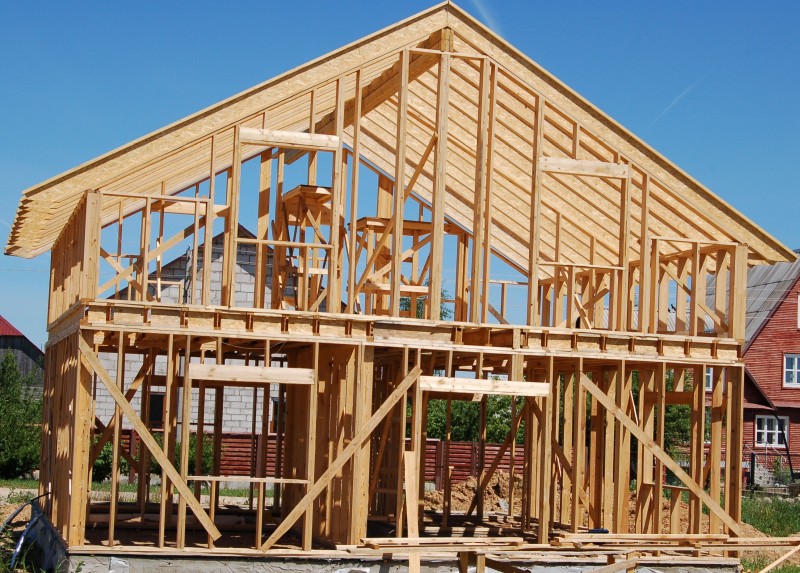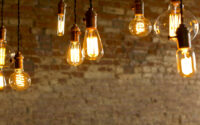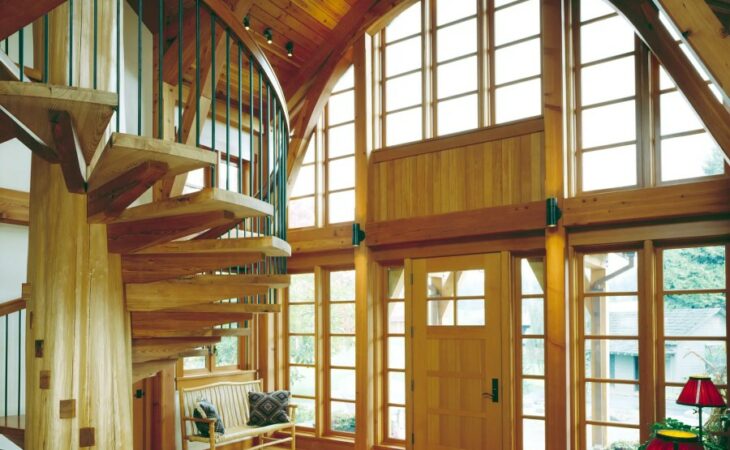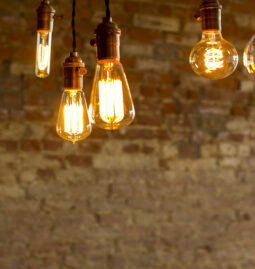What are the advantages and disadvantages of timber frame houses ( WFH )? Why build your home with a wood construction method? How to exploit this natural material which has significant climatic potential.
Table of Contents
The WFH: Wood Frame House
The construction system of the wooden frame is the most widespread technique, it consists in erecting a regular and closely spaced frame, of vertical wooden pieces of small sections called “uprights”, and high, low and middle horizontal pieces called ” sleepers ”and“ spacers ”.
The advantages of the wooden framework, in addition to its contemporary and plural aesthetic, are the lightness and speed of installation.
The wooden frame allows a wide architectural expression both in form and appearance: all exterior coverings are possible. The wooden frame can receive many types of facings: cladding, bricks, stone, concrete, and thus be part of the tradition of landscapes, climates and regional heritage.
There are several methods of wood construction : load – bearing panel , post-beam , half – timbering or stacked solid wood .
This wide variety of wood construction processes makes it possible to respond to the specificities of each project, both in terms of appearance, modern or traditional, as well as volumes and openings, while adapting to site constraints and to the financial envelope.
Wood frame house and hemp / wood fiber exterior insulation.
The wooden frame
Why build with a timber frame?
For its structural lightness:
Wood is a material up to 7 times lighter than concrete (with equal structures) which allows:
Significantly reduce the structural volume of the work.
Manufacture easily transportable frame panels. Indeed, the advantage of the timber frame construction system allows most of the components of the house to be prefabricated in the workshop.
Transport the frame at a reasonable cost.
Limit the foundations of the wood structure (the lightness of the wood allows substantial savings on the foundation item).
Settle down on all types of terrain (unstable location, steeply sloping, enclosed or cramped lot, etc.).
For its speed of execution:
The framing panels can be delivered fully equipped, windows and facings included. The assembly of elements according to the degree of prefabrication in the workshop generates reduced costs of labor, structure and tools.
A small team of 3 or 4 people is sufficient for assembly. A timber frame construction requires little labor. The assembly is done in a few days using lifting gear. The sites are very short: a week is enough to put a house out of water and out of air.
The other trades can then intervene sheltered from bad weather. There is no waiting for the setting or drying time. The assembly of the framework is carried out with a minimum of cutouts (little loss in terms of budget and environment). All waste remains recyclable. The site and its surroundings remain clean.
A wooden frame house built with healthy materials.
The wooden house

Why choose a timber frame house?
For its interior comfort:
- The wooden frame walls are thin (approximately 20 cm). They thus offer more living space (± 8% more than concrete blocks) for optimum thermal comfort.
- The breathable nature of the material which regulates the ambient humidity.
- The low inertia of the wood allows rapid heating.
- The air gap between facings and framework.
- The insulation residing in the thickness of the uprights.
- A virtual absence of thermal bridges (ie 30% of heat loss in traditional construction).
For its architectural diversity:
The wooden framework makes it possible to create homes of all sizes, in all architectural styles and in a wide range of shapes, including arched ones, in compact volumes of all kinds (light leisure accommodation, luxury residence, holiday home, home, workshop, agricultural, commercial premises, etc.).
The realizations in wood frame can be made in a wide variety of wood species (hardwood, softwood, exotic), and can be easily combined with other materials (metal, glass, brick, concrete…).
Integrating a natural material such as wood in cities makes it possible to humanize town planning in a sustainable way: according to recent studies, wood is spontaneously respected, it is not subject to vandalism and calms social aggression. .
A house built using a hammer and a saw.
Constructive method
On the inside of the walls, the insulation and the frame are covered with a vapor barrier film that will prevent any moisture from inside the house from seeping into the insulation.
Without it, the moisture naturally contained in the warm air inside the house would condense on coming into contact with the outside face of the wall.
Wood aging factors:
The upkeep and graying of the wood depend on its exposure and its use (wooden slats in contact with the ground, rainwater gutters flowing onto a wooden facade, etc.). In all of these cases, the humidity will accelerate the degradation of the wood.
Concerning ultraviolet rays, the protection of the wood will depend on the exposure of the facades and the quality of the protective screen (oils, stains, paints) like sunscreens. Under the action of UV rays, the lignin in the wood degrades and the wood strips of your siding take on a gray tint.
Even Teak and Ipé turn gray over time. Some people consider graying to be part of the charm and beauty of Teak. Despite this change in color, the exotic wood cladding retains all of its mechanical qualities and properties (rot resistance, resistance to insects and fungi).
What is the maintenance of wood, with non-harmful products?
If you want to keep your wood siding its original color, you will need to maintain it once or twice a year (in hot weather, because it penetrates better) by applying linseed oil with a little gasoline turpentine. It is an inexpensive, water-repellent protection that delays graying.
There are stains stamped “organic”, colored which reveal the grain of the wood. These stains provide better protection against UV thanks to the pigments they contain. These “organic” stains must be renewed every 3 to 5 years for facades facing south and every 8 to 10 years for facades facing north. Unlike paints, they do not require prior sanding. Simply brush the blades to remove pigment dust.
The paintings paints “organic” provide longer protection because they contain fillers (chalk majority) that form a screen against UV.
What are the advantages of timber frame houses?
The atmosphere of a wooden frame house is very pleasant, the velvety wood creates a natural harmony
The framework supports the floors and the roof, a wall made of panels derived from wood (particle board, plywood or OSB) is fixed on this framework to ensure the bracing
A thermal insulation is inserted between the panels that cover the interior and exterior facings
The prefabricated wooden elements allow to be more efficient in terms of time, labor, organization. The care taken in the preparation is carried out in the workshop far from climatic hazards
From an economic point of view, this makes it possible to be more competitive and more qualitative
The panel chord for its speed and convenience allows thinner walls to be made, the spaces created are freer with possibilities to place large openings and more view.
For the same architecture, the wooden frame is more economical than the concrete block and much healthier
Disadvantages of WFHs
The main drawback of houses with a wooden structure remains psychological. The wooden house is assimilated to the “hut and the plank hut” or “the house of the little pigs of Walt Disney” by the general public. This type of prejudice can only disappear by carrying out quality constructions.
For a house with a wooden structure, the absence of thermal inertia can have some advantages (in winter when the slightest ray of sunshine will add calories), but also drawbacks. For example, in the summer, leaving the shutters open, if the heat enters the house can make it appear as if it is not insulated. The inertia of these constructions can be increased by taking a certain number of precautions, at ground level by laying tiling, as well as by placing other thermal masses inside, such as shear walls, massive chimney in stone, etc.
Obligation to treat wood. It is not possible today to make wooden constructions without treatment. The presence of termites in certain regions imposes a certain number of precautions which are essential today. These chemical treatments, by injection of products in an autoclave under pressure, are toxic despite all the existing techniques for reducing this toxicity.
The timber frame house suffers from a bad brand image because most of the current achievements were until recently modest and often of poor quality. In countries like the USA, Switzerland, or Norway, Sweden, etc., constructions are traditionally made of wood and of good quality.
The timber frame house is tending to become a luxury product (the prices are affected).










